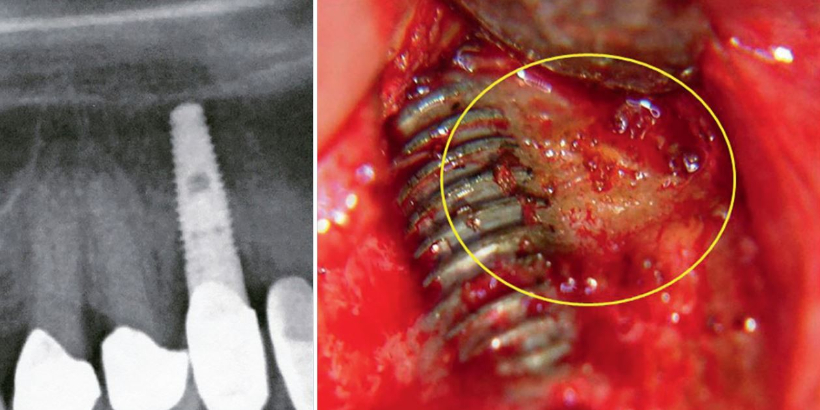Zahnimplantate und Knochen Knochenmarkdefekte – Bewertung der Knochenqualität durch intraorale Ultraschalluntersuchung

In der Ausgabe 1-2022 des englischsprachigen Magazins ceramic implants ist Dr. Johann Lechner mit einem Fachbeitrag zum Thema „Zahnimplantate und Knochen Knochenmarkdefekte – Bewertung der Knochenqualität durch intraorale Ultraschalluntersuchung“ vertreten:
In ceramic implants—international magazine of ceramic implant technology issue 2/2021, I discussed the objective validation of bone quality before implant placement in light of establishing whether the level of mineralisation in the jawbone is sufficient to osseointegrate an implant without any issues and to keep it secure in a stable bone bed for a long time or whether the implant is connected to a bone marrow defect.1 In this current article, I would like to consider two questions relevant to the situation after implant insertion:
– Was the implant inserted into poorly healed bone?
– Is implant failure directly associated with incomplete wound healing of the implant site and a bone marrow defect around the implant?
How to forecast the success of dental implants
The measurement of the quantitative ultrasonic transmission velocity (UTV) has been established as an innovative, objective, valid and reliable method for repeated, non-invasive measurements of bone quality before dental implantation.5 The intra-individual correlation of the UTV values of the maxillary and mandibular lateral regions makes the data easy to interpret. The use of a small UTV device in this study enabled the recording of intra-oral UTV values in a large and heterogeneous patient population. Assessment of alveolar ridge UTV could provide a method for identifying critical bone quality before implant insertion or for monitoring bone healing (mineralisation) after augmentation procedures.
The main advantages of ultrasonic measurement are that it is non-ionising, non-invasive, tolerable and available at relatively low costs. Furthermore, the examination is not a complicated process and can be easily performed by clinicians.7, 8 The new technology of trans-alveolar ultrasonic (TAU) measurement by CaviTAU can reliably identify regions of low mineralisation density in
bone marrow cavities with signs of bone marrow defects and collateral chronic ischaemic inflammation.
Implant insertion and bone marrow defects
There is no doubt that dental implantology has achieved a very high reliability and success rate in recent years. Despite this, there is increasing evidence that, in addition to the success of long-term stability, other medical assessment criteria should also be part of the discussion. Further questions on implant insertion arise, such as:
– Are good stability and loading capacity of an implant the only assessment criteria for implant success?
– Is there also undetected silent infl ammation arising from fatty degenerative bone marrow defects (fatty degenerative osteonecrosis of the jawbone; FDOJ)?
A clinical case gives the answer to these questions: the panoramic radiograph showed that the implant had healed inconspicuously, hiding that it was directly attached to fatty degenerative morphology (Fig. 1). The overexpression of chemokine RANTES (CCL5) in regions of reduced bone density surrounding implants, as presented in the following case reports, has been described in detail. These FDOJ areas persist as silent or subclinical infl ammation without the typical signs of acute infl ammation.
[…]
Den vollständigen Artikel lesen Sie HIER.

